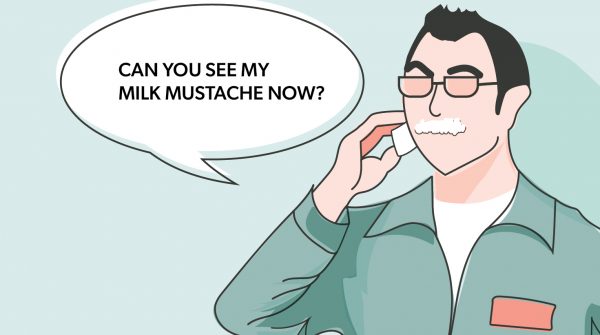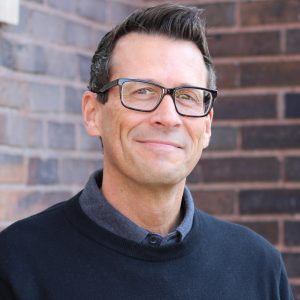A look back at people and characters who made some of our campaigns so memorable.
Ricardo Montalban. C.W. McCall. Annie Liebowitz. Marlon Perkins. The Verizon Test Man – aka the “Can you hear me now?” guy.
These are names – some characters, some real people – that gave iconic pop culture status to many of Bozell’s advertising and marketing campaigns over the past 100 years.
Can you hear me now?”
That phrase made its debut in 2002 when our agency created it for a series of Verizon ads. Actor Paul Marcarelli starred as a Verizon field analyst – “Test Man” – who dropped in on all sorts of random locations around the country and asked, ‘‘Can you hear me now?’’ into a mobile phone. To which he’d follow with, ‘‘Good!’’
Marcarelli appeared in several more Verizon commercials between 2002 and 2011, and then switched teams in 2016, joining Sprint. Today, Marcarelli is still a spokesperson for Sprint, which has since merged with T-Mobile.
Next up? Ahh, yes, “Corinthian leather.” It just sort of rolls off the tongues, doesn’t it? Who can forget those Chrysler ads touting the luxurious leather for their Cordoba models in the 1970s and ‘80s?
I know my own needs, and what I need from an automobile I know I get from this new, Cordoba. … I request nothing beyond the thickly crucial luxury of seats available even in soft, Corinthian leather.”
The pitchman? Ricardo Montalban, who you might know better as Mr. Roarke from “Fantasy Island.”
So, what is “Corinthian leather,” and where did it come from? The name was the brainchild of one of our crafty copywriters who coined the phrase as we were creating the campaign for Chrysler. He thought it sounded luxurious and was a perfect fit for the lavish vibe of the TV ads in which Montalban would star. Which begs the question: Is it real?
Montalban himself answered that question during a 1987 appearance on the “Late Show with David Letterman.”
“What is the deal … what the hell is … is there anything, really, Corinthian leather? Is that anything?” asked Letterman.
In typical Montalban fashion, he wove a fantastical tale, which gets a laugh from the audience. Letterman persists, “But does it mean anything?”
“Nothing,” Montalban deadpans, grinning widely.
Montalban passed away at the age of 88 in 2009, but the catchphrase he delivered in his irresistible opulent Spanish accent lives on.
And who could forget the opening lines to the classic “Old Home Filler-Up an’ Keep-on-a-Truckin’ Café”?
Well, interstate 80, we was cuttin’ the fog
Just me an’ old Sloan (old Sloan’s my dog)
We had an 18-wheeler, 10 on the floor and stereo layin’ a strip
Now we spied a sign, says eat gas now
We decided to whip in and pick up some chow
At the old home filler-up an’ keep on a-truckin’ café.”
That song was written and performed by Bill Fries when he was the creative director at our agency back in 1973. You might know him better as C.W. McCall, his stage name.
Fries wrote several more episodes in the story arc to the same tune as he told the tale of truck-driving C.W. McCall (played by Dallas actor Jim Finlayson in the TV commercials) and a waitress named Mavis (played by Dallas actress Jean McBride Capps).
The story and music were part a series of 60-second commercials created for Metz Baking Company. The campaign won the 1974 Clio Award in New York where it was judged “The Best Overall U.S. Television Campaign for 1973.” It beat out national campaigns for corporate giants like Kodak, Xerox, Metropolitan Life and Eastern Airlines.
The success of that single – with music by Chip Davis of Mannheim Steamroller fame (Davis was a jingle writer for us at the time) – led to a recording contract for Fries, who continued to perform under the name C.W. McCall.
Together, Fries and Davis wrote the novelty song, “Convoy” in 1975, which hit No. 1 on both the pop and country charts and inspired a movie of the same name.
The song’s success landed Fries on the “Tonight Show with Johnny Carson,” “Hee Haw,” the “Mike Douglas Show” and numerous other national TV appearances.
Fries, born in Audubon, Iowa, ran for mayor of Ouray, Colorado in 1986 and won, ultimately serving six years. He’s 92 today and still truckin’.
Here’s another one for you:
Annie (Leibovitz) sent a note back to us saying that not only did she want to do it, but she wanted to make sure nobody else could. “She saw the power of what this was going to be. At a time when print magazines were very big, she thought that if she were to make the photos really special, they would be everywhere. You couldn’t get away from this campaign.”
That was a quote from Bernie Hogya (speaking to Fast Company in 2018), who was one of our art directors in 1996 when we created the milk mustache movement (that piggybacked on the “Got milk?” campaign created by Goodby, Silverstein & Partners in 1993).
In 1996, iconic photographer Annie Leibovitz began photographing celebrities for our milk mustache campaign. Over the years, she photographed more than 180 of the ads.
It began with a print ad featuring Naomi Campbell, followed by dozens of stars, including Harrison Ford, Britney Spears, Kate Moss, Kristi Yamaguchi, Joan Rivers, the Simpsons and Kermit the Frog.
The milk mustache campaign became a pop culture phenomenon and several books have been published since that highlight the numerous celebrities who were a part of it.
As for Leibowitz, she’s still taking historic photos at the age of 71. One of her latest shoot subjects was First Lady Jill Biden for the August cover of Vogue magazine.
And one final one for you:
Just as the mother lion protects her cubs, you can protect your children with an insurance policy from Mutual of Omaha…”
That one comes from Marlin Perkins, the famed zoologist who hosted “Mutual of Omaha’s Wild Kingdom,” a show we helped create and then promote over the years. The pioneering concept took product placement to a whole new level by branding an entire TV program.
The original airing of “Wild Kingdom” ran from 1963 to 1988. Perkins hosted until 1985 when his co-host, Jim Fowler, took over. The program won several Emmy Awards, including “outstanding program achievement” in 1966, 1967, 1968 and 1969.
Perkins was also the off-camera narrator of the show, who often described Fowler’s on-camera interactions with the animals. Comedians have goofed on this over the years suggesting Perkins said things like, “I’ll wait here (out of harm’s way) while Jim (wrestles an alligator or something else dangerous) …”
In a 1997 interview, Fowler said Perkins never made any such comments, and that joke-makers like Johnny Carson were the ones who propelled the humorous misquote. There were, however, funny true tales that happened during the filming of the show. We recently talked with Bozell CEO Kim Mickelsen about that on “Marketing Then and Now: A Talk and Tell with Bozell,” our monthly podcast.
Perkins passed away in 1986 at the age of 81. Fowler passed in 2019 at 89.




